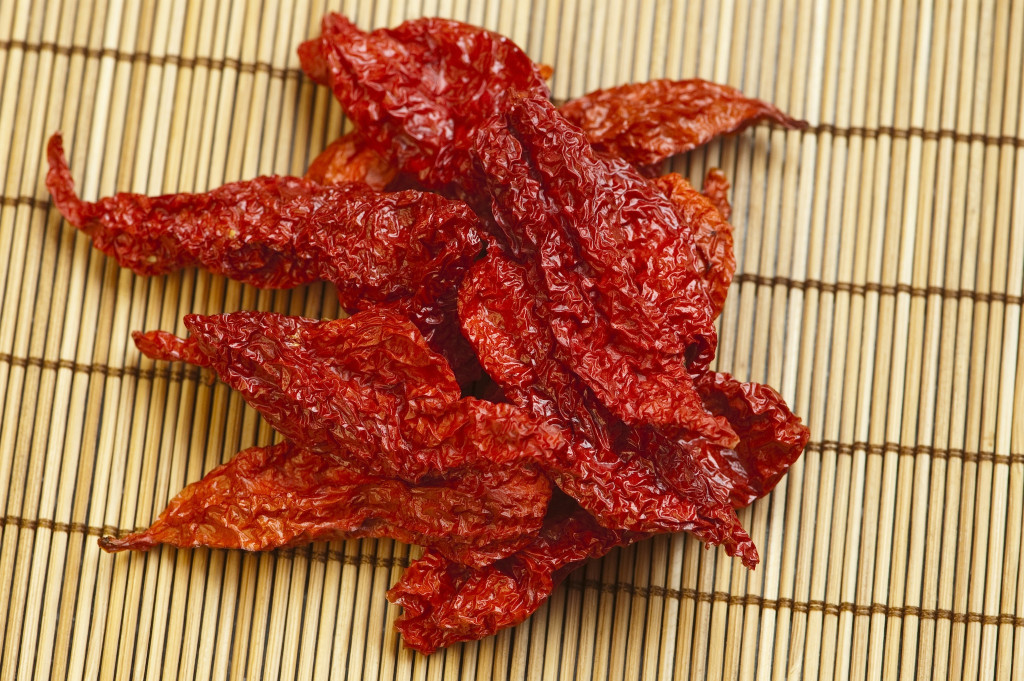Last year I ate a ghost pepper. It was hot.
I can’t really complain, because I knew it was a mistake at the time. Some people have to touch the electric fence. Others go to exotic grocery stores and ruin their lives. It’s the same principle. If I hadn’t eaten the ghost pepper, I wouldn’t know what a ghost pepper tasted like. Nor would I be able to tell you with certainty what I know now: Hell is real.
I’m not actually sure what ghost peppers are for, outside of starting a theological debate. As far as I can tell they join tsunamis in being the planet’s attempt to address population sprawl. The philosopher David Hume believed that it’s inaccurate to describe an individual human. Rather, each person is a sequence of time frames, separated out over the course of a standard life, each frame distinct from the next. This is not, to my mind, true, but oddly it becomes true after you eat a ghost pepper. Time splinters into all the myriad possibilities that could have been your existence. You see all of them simultaneously, and those splinters that existed before you ate the ghost pepper do not speak to the splinters that exist after you ate the ghost pepper. Because fuck those guys.
To understand the degree to which the mistakenness of this act had already been predicted by the scientific community, it is necessary to explain the Scoville scale, the method by which we determine capsaicin concentration, the compound in peppers that causes heat, devised over a century ago by Wilbur Scoville. (You will note that if it is quantifiable and bad for humanity, a chemistry major was involved at some point.) In The Scoville Organoleptic Test, tasters judge the capsaicin content of diluted samples of peppers, while the test itself watches them from a throne of pain, stroking a basalt mace. (The word “capsaicin” itself is from the Latin root Capsicum, meaning “God is just a word we made up.”) The scale starts at zero for bell peppers, is about a thousand for jalapenos, and eventually devolves into what would have happened if Josef Mengele had been challenged to a chili bakeoff. For instance, the Carolina Reaper, currently considered the hottest pepper on record, weighs in at over two million Scoville units, which in context is an imaginary number. It’s like if you stuck up a 7-Eleven and demanded a trillion dollars. It’s a name that corresponds to an idea, but under the circumstances just doesn’t make sense. The ghost pepper measures a comparatively modest one million Scoville units.
Humanity is one of the only species on earth that will deliberately injure itself. From ritual scarification to outright suicide, we tease at the foreknowledge of our mortality like a kitten at a flowerpot, not quite knowing when the whole thing will tumble over. Although individual reasons vary, the practices of self-harm are cross-cultural and ubiquitous. It is the irony of our race that, as one of the only life forms on the planet aware that death is possible, we will deliberately accelerate or toy with that process, perhaps out of some vainglorious denial, or morbid curiosity, or a simple desire to get the whole ghastly business over with. There are any number of factors that drive us, both individually and as a group, into the Valley of the Shadow. What is known for certain is that lurking in the fringe of that grim penumbra is a desire for bold, assertive flavors. In the Voudon religion, chili peppers are often eaten to attract the attention of the Loa. That is, they are hot enough that eating them necessitates divine intervention; most of the peppers used in such rituals top out at about 350,000 Scoville units, i.e., hot enough to make god pity you and still not as hot as the ghost pepper. When Emperor Cuauhtemoc learned that the Spanish invaders were massacring the countryside, he described it as feeling as though “his heart had been stroked by chili peppers.” Eating really hot chili peppers was as bad as witnessing the extinction of your civilization. The chili in question, a type of habanero, measures 100,000 on the Scoville scale; genocide-level hot, but not as hot as the ghost pepper.
The ghost pepper itself is of Indian origin, where it is known as the bhut jolokia and is grown in a country that worships Shiva, a god typically depicted dancing on the burning remains of the earth. And he is the good guy. I found ghost peppers, on purpose, in a grocery store in New York, where they were being kept in the basement. They looked deceptively like Scotch Bonnets: Wrinkled, glossy nuggets in pearlescent shades of rust and sea anemone green, dangling like Christmas ornaments in a stock cupboard of comparatively pedestrian serranos and bird’s eyes.
Yeah, I bet they taste just like candy, said a voice in my head. It was an unfamiliar voice, gruff and sarcastic, with the tinge of a Bronx accent. I never heard it again.
The cashier who sold them to me looked at me with the same expression as I imagine was on the face of the last bartender to serve Dylan Thomas.
“It’s cool,” I told him. “I’m childless and no one really loves me.”
He didn’t seem comforted. He pushed the bag towards me and turned away, like the disappointed saints in stained glass windows. I left the store feeling certain I would never see him again. You only meet Charon once. Because the jalokia’s on you.
If you look up “uses for ghost peppers” on the Internet, you will get one barbecue recipe featuring a picture of a confused-looking man stirring something in a steel drum, a series of hits covering the history of chemical warfare, and one article titled simply, “How do I make this elephant fear me?” Outside of that, no one seems to know how or why they should be prepared. The closest I got to recipes was as an optional addition, and usually with some moral alarm; sure, you could add a ghost pepper to your stew, just like you could add cyanide to your wealthy aunt’s cocoa, or you could add a file to a cake. That doesn’t mean that you should. Clearly, I was going to be on my own. Most of the recipes advised not using the knife that cut the pepper again on anything else ever, so finally I just picked it up and bit it.
People frequently eat spicy peppers because they trigger a mild endorphin rush, which in the case of the ghost pepper is like opening the door on a submarine because you need to refill the ice cube tray. After you eat the pepper, the part of your brain that triggers endorphins takes the form of James Mason’s head and tells you, “I’m sorry, but that was a mistake and there’s nothing I can do for you. What you are feeling will never end. I am leaving now to roam the cosmos in a ship made of dreams.” Then the head rises through the ceiling, and for a fleeting second you see a herd of buffalo charging across a lake of stars. Then there is only darkness.
There’s no point attempting to describe their flavor. It would be like trying to explain what a wormhole smells like. The effect lasts for about four hours, and I know this because there are four hours of my life that I can’t account for. I came to in the bathroom, obsessively washing my hands and feeling a grim certainty that I shouldn’t look in the trunk of my car. TELL THEM I DEMAND GIFTS OF CORN AND MAIDENS had been scrawled on the mirror in lipstick, in unfamiliar handwriting. There was an altar in the living room, constructed from pigeon bones and racquet balls. A copy of Thus Spake Zarathustra was on the floor. It had been partially eaten.
They came in a pack of eight. Figure out what that means, and you’ll have worked out the human race.
 When Joshua Rupp was a child visiting Germany, he went to the Bone House, a cage in town where they stacked the skulls dug up from paupers’ graves. While he was staring at the skulls, a man from a local stall came over, wound up a mechanical chicken, and made it walk over the top of the cage. He then took his chicken back, bowed, and went away. Joshua realized that nothing more important was ever going to happen.
When Joshua Rupp was a child visiting Germany, he went to the Bone House, a cage in town where they stacked the skulls dug up from paupers’ graves. While he was staring at the skulls, a man from a local stall came over, wound up a mechanical chicken, and made it walk over the top of the cage. He then took his chicken back, bowed, and went away. Joshua realized that nothing more important was ever going to happen.
feature image via Red Stick Spice Co.


Comments are closed.